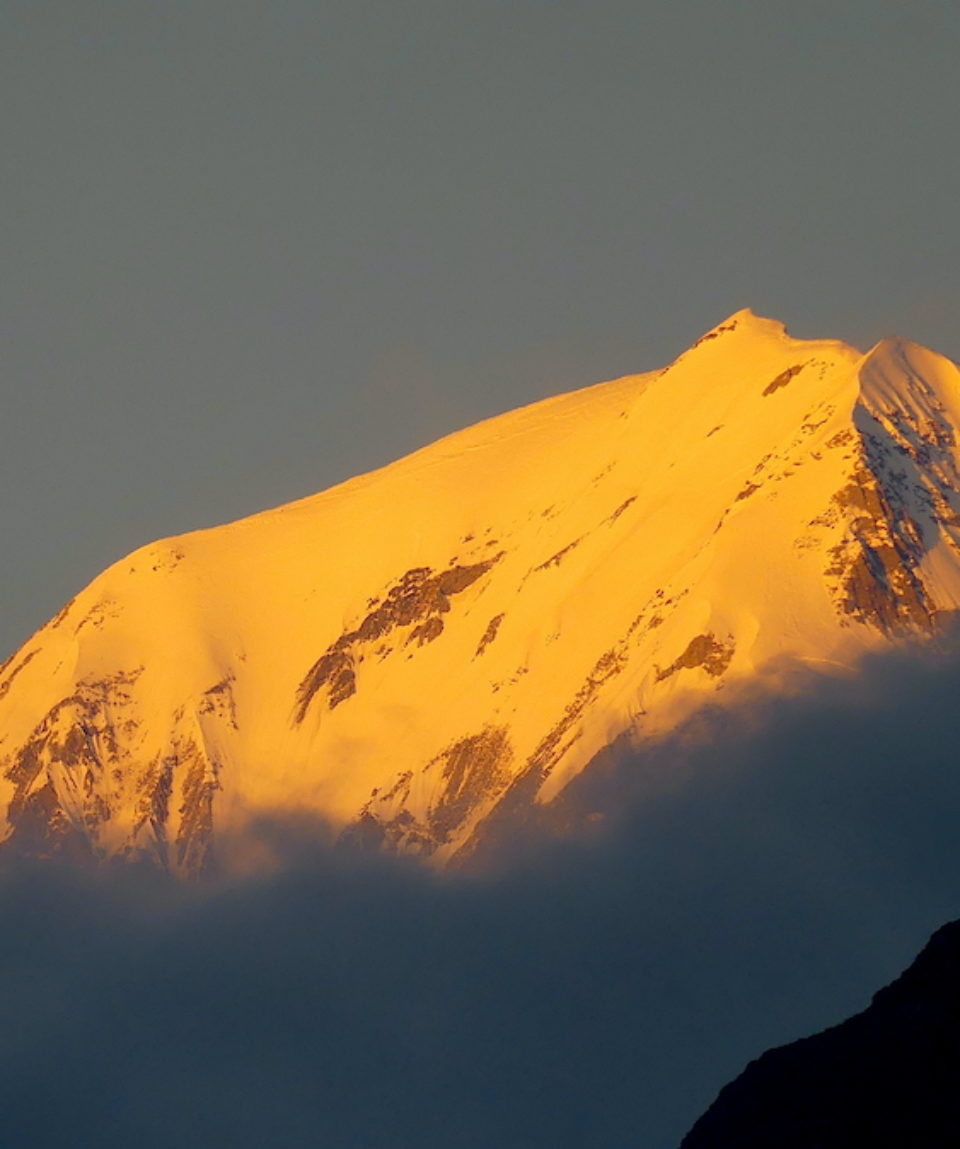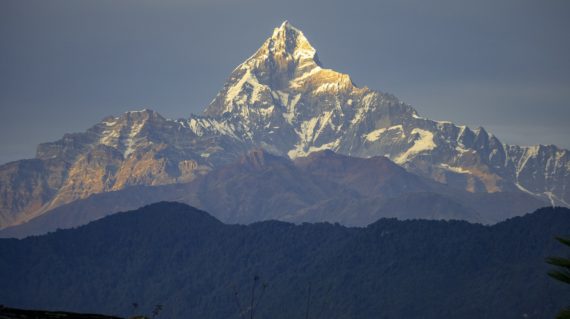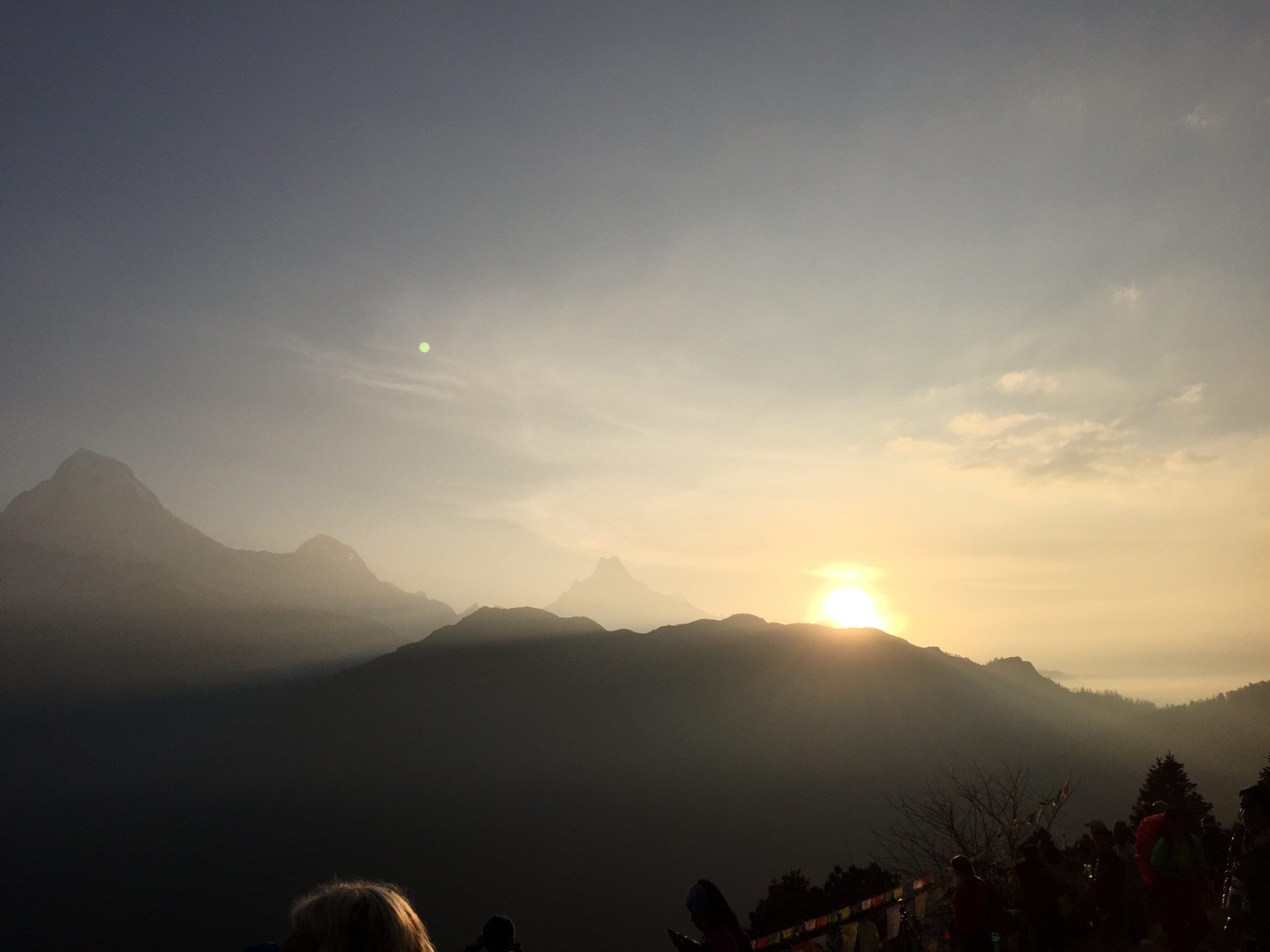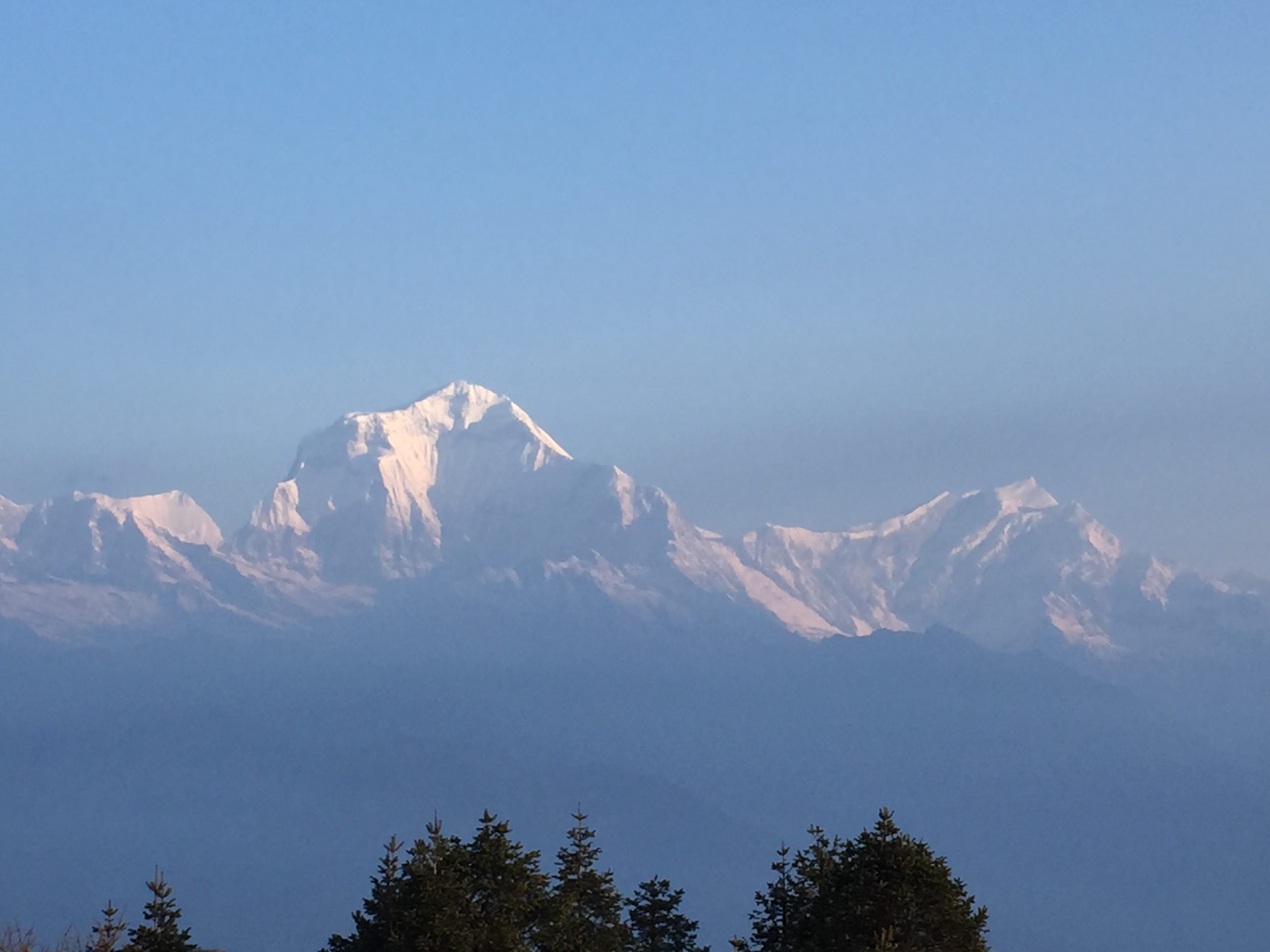
Poon Hill Trek: The Perfect Beginner’s Adventure
fromExperience the Poon Hill Trek for Beginners, an accessible and beginner-friendly adventure in the Annapurna region. Ideal for first-timers, this trek provides a taste of Nepali hiking without the intense challenges of higher-altitude trails. Reaching a maximum elevation of 3,210 meters, the journey spans comfortable 5 days, making it a perfect warm-up for more strenuous treks.
Known as the Annapurna Sunrise Trek, Poon Hill offers breathtaking panoramic views of some of Nepal’s most famous peaks, including Dhaulagiri, Nilgiri, Annapurna I, and Annapurna South. As you trek through rhododendron forests and rice paddies, you’ll experience the beauty of snow-capped mountains and charming local villages connected by ancient trails.
The trek begins in Nayapul, following a scenic one-and-a-half-hour drive from Pokhara. The route takes you through the picturesque villages of Thikhedhunga, Ghorepani, and Ghandruk, each offering stunning alpine scenery and a glimpse into the lives of the Gurung and Magar communities. Every twist and turn on the trail reveals new vistas of the high mountains, culminating in the awe-inspiring viewpoint at Poon Hill, where you can witness the sunrise over the Annapurna range.
As the first rays of sunlight touch the snow-capped peaks, the Himalayan giants Dhaulagiri (8,167m) and Annapurna (8,091m) emerge from the darkness, creating a magical and unforgettable sight. The vibrant rhododendron forests, teeming with birds, and the lush valleys add to the trek’s charm.
The best times to take on the Poon Hill Trek are in the spring (mid-February to mid-May) and autumn (September to mid-November). Autumn offers clear skies and moderate temperatures, perfect for capturing stunning mountain views. Spring brings warmer days and colorful rhododendron blooms, transforming the trails into a lively and bright spectacle.
While the Poon Hill Trek for Beginners is easier compared to higher altitude treks in Nepal, it still presents a rewarding challenge. The steep ascent from Tikhedhunga to Ghorepani involves a 1,387-meter elevation gain in one day, but the risk of altitude sickness is minimal due to the trek’s maximum height of 3,210 meters.
Book your Poon Hill Trek with Elite Explorer today and experience the perfect introduction to Nepal’s breathtaking landscapes
-
Reviews 0 Reviews0/5
-
Vacation Style Holiday Type
-
Activity Level Moderate
-
Group Size Small Group
The Poonhill walk begins in Nayapul after a one-and-a-half-hour drive from Pokhara. This route travels through three scenic settlements: Thikhedhunga, Ghorepani, and Ghandruk. The excursion will take us past breathtaking alpine scenery and attractive Gurung and Magar settlements.
Similarly, as we approach the heights of our walk, every turn brings an exhilarating view of the high mountains, which will open up vast horizons to us. Poonhill’s viewpoint has the best view of the mountains and sunrise (3,210 m). The lush rhododendron trees abounding with birds and the stunning valleys will add to our journey.
When the sun hits the snow-capped summits, the Himalayan giants Dhaulagiri (8,167m) and Annapurna (8,091m), along with a tangle of other peaks, slowly begin to appear before your eyes, like magic.
Poon Hill Trek, like other treks in the Annapurna region, is best done in the spring (mid-February to mid-May) and autumn (September to mid-November).
Because it is both post-monsoon and pre-winter, autumn trekkers do not have to worry about monsoon rain or the bitter cold of winter. During the day, the temperature rises and then falls in the mornings and evenings. Throughout the day, the sky remains sunny, affording stunning views of the Annapurna range. Similarly, after autumn, April is an ideal time to go on this walk. The temperature rises during the day and then drops in the morning and evening. The days will be warmer than in the winter because it is the pre-monsoon/summer season. Because it is the flowering season, the walks will be lively and bright. Rhododendron blossoms turn the forest floor a gorgeous shade of green.
Poon Hill, on the other hand, may get quite crowded, especially during the two main trekking seasons in this region. As a result, we may expect to see hundreds of other hikers while taking in the scenery.
When compared to other Nepalese treks at higher altitudes, this expedition is rather straightforward. The journey from Tikhedhunga to Ghorepani would be difficult due to the 1,387 m elevation gain in one day. Because the highest point reached on this trek is 3210 meters, the risk of altitude sickness is limited.
Keeping up with your guides or fellow hikers can be difficult if you stop frequently to take in the sights of the Poonhill. For accommodation, we would have basic teahouses sorted for us. These teahouses will offer us three meals a day and provide a warm shelter for our bodies to rest and acclimate.
Trekking Highlights:
- Witnessing one of the best Sunrise and Himalayas Views at Poonhill (3210m)
- Experiencing and spending a night or two amid the lifestyle of one of the Biggest Ghandruk Gurung villages and the Magar Villages in Ulleri and Thikhedhunga
- Views of Dhaulagiri (8167M,) Manaslu (8163m,) Annapurna I (8091m), and other majestic mountains
- Getting to know the rural side of Nepal through the villages like Birethanti, Hile, Tikhedhunga, Ghorepani, Tadapani
- Climbing 3,381 steps to be rewarded with the panoramic views of Dhaulagiri
- Enjoying the views of alpine lakes, fields, and mountains, including Annapurna South
Why Trek with us?
Quality:
We are assured that the trip highlights would have made you tempted to trail the Poonhill, and, with us, we can add flair to it. For us, quality isn’t just about luxury but a sense of interconnectedness with society. We can guarantee you this interconnectedness. We design our trek in such a way that you won’t just be walking through the trail but making memories with us and the locality. We will interact with the locals, take pictures, have food with them, and make ourselves home.
Giving back to the community:
We are a product of the Nepalese community, and as such, with each trip we do, we plan some sort of activity to guarantee that the locals benefit fully.
We will either contribute books, or stationery supplies to schools along our Poonhill Trek routes. Similarly, while in Pokhara, we can contribute clothes and other stuff to the Tibetan refugee camp while purchasing local arts and crafts. This will also allow us to connect to the refugees and make them feel at home while we would be evolving into elite explorers ourselves.
We believe in honesty and openness, so we won’t just make promises and then sit back. We will mobilize volunteers to donate the gathered things while on the Poonhill trek, and we will visit these locations and lend a hand to mobilize the resources we would have contributed. Similarly, we would be directly contributing to the community’s well-being by participating in at least one of the activities that the locals on the routes that lead us to Poonhill would be performing – such as purchasing their crafts or taking paid classes to learn to make those crafts.
- Pick up and transfer to the booked accommodation by Elite Explorer representative from Tribhuwan International Airport Kathmandu. (please look for your full name card outside the arrival hall, +977 985 115 5251 arrival assistance WhatsApp call or message)
- Twin sharing or double bed accommodation with buffet breakfast in Kathmandu and Pokhara.
- Guided, know your surrounding tour in Kathmandu.
- Private vehicle for ground transport in Kathmandu.
- Kathmandu to Pokhara 30miutes domestic flight
- Pokhara Nayapool Private vehicle drive.
- Guided trek by our expert and experienced English-speaking trekking guide. (language guide can be arranged based on your preference.)
- A porter to help carry our trekking bags (trekking bags must not exceed 20 kg, 2 pax combined )
- Locally available breakfast, lunch, and dinner including tea or coffee.
- Basic Mountain Lodges (famously known as tea houses) for accommodation.
- Guide Porter salary remunerations and insurance
- Trekkers Information Management System (TIMS) card.
- Necessary documentation and Annapurna trekking permit.
- First aid kit including oxygen meter
- Nayapool to Pokhara ground transportation by a private vehicle.
- Pokhara Kathmandu thirty minutes domestic flight.
- Government tax
- Airport transfer upon completion of the program
- Client personal expenses and bar bill including soft drinks
- Natural Calamities beyond our control and expenses incurred in such rescue services.
- Travel/Medical Insurance
- Lunch dinner in Kathmandu and Pokhara
- Day 01 Arrival in Kathmandu
- Day 02 Fly from Kathmandu to Pokhara (820m/2,690ft); 6-7 hours by road, 30 minutes by air
- Day 03 Drive from Pokhara to Nayapool (1070m) by a private vehicle, and Trek to Tikhedhunga (1,480m) approx 4 hours trekking
- Day 04 Trek from Tikhedhunga to Ghorepani (2,860m), 6 hours
- Day 05 Hike from Ghorepani to Poonhill (3,210m) in the morning (1 hour), and trek to Tadapani (2,610m)
- Day 06 Trek from Tadapani to Ghandruk (1,940m), 3 hours
- Day 07 Trek from Ghandruk to Nayapool (4-5 hours), and drive back to Pokhara (1-2 hours)
- Day 08 Fly from Pokhara to Kathmandu, 30 minutes
- Day 09 Departure

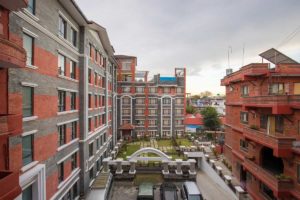

How many hours do we trek each day?
We will trek for six hours on average, but depending on the region you trek in, you might go for nine hours straight, including breaks for meals.
What transportation will it be to the trekking starting point?
Depending on the trekking region, either private transportation or air travel will be used.
Can I leave the things behind before heading for trekking?
Yes, we’ll tag your bag and keep it at your accommodation until you get back. Likewise, you should travel as lightly as possible when trekking.
Is it very cold in Kathmandu on my arrival?
There are four seasons and 300 days of sunshine in Nepal. As a result, Kathmandu’s lowest recorded temperature is -3 degrees Celsius, or 26.6 degrees Fahrenheit. However, while trekking, the temperature may drop to -13 degrees Fahrenheit or -25 degrees Celsius. For more details on what to pack and bring please contact your dedicated travel consultant or you can also contact us via E-mail.
Do I need to be extra careful of altitude sickness?
Our itineraries are made to give you plenty of time for acclimatization, reducing the likelihood that you will have altitude sickness. Every evening before or after dinner, our extremely knowledgeable guide will give us a briefing for the following day’s trekking, including instructions to prevent altitude sickness over 3500 meters. You must notify our guide right away if you have shortness of breath, headache, exhaustion, nausea, vomiting, a rapid heartbeat, or insomnia since altitude sickness can be fatal.
How many kg of bag pack am I allowed to carry?
The greatest option is usually to trek light. The best-recommended backpack weight is 10 kg for trekking bags and 5 kg for carry-on luggage because one must also include basics. (It also serves as the flight to Lukla’s weight restriction.)
Will there be a porter to carry my bag pack apart from the guide?
Yes, a porter will assist you in carrying the trekking backpack packs.
Can you tell me about the food in the mountains?
Most of the food is freshly prepared, but meats may have been stored for a while. Freshly prepared Daal and Bhat, a staple of traditional Nepali cuisine, are the finest.
How basic are tea houses, can I shower every day?
A basic bed, private or shared bathrooms, cold water in the absence of electricity or sunlight, charging the wifi battery, and the absence of a room heater. This is how simple tea houses seem. Further, during the cold winter, the water freezes in the pipe leaving no running water.As mentioned earlier, having a hot shower (or bucket full of hot water) is feasible in most tea houses, however, if unfavorable circumstances like an electricity cut-off occur, you may have to wait to take a hot shower.
Is there wifi or cellular signals in the mountains?
In the tea houses along the trails, there is wifi, however, the signal strength and speed may not be as advertised. On request, Team Elite Explorer will provide you with a local sim card for data subscription.
How about power, will there be charging points?
There will, in fact, be charging ports. Be considerate when charging your electronics as tea houses provide shelter for other hikers as well.
In case of medical issues, how will I get assistance?
Our guide will evaluate the case according to its seriousness, seek advice from the office as necessary, and then decide on the spot whether to transport the patient to the nearest medical facilities or call for help. When trekking in Nepal, kindly make sure to have comprehensive travel medical insurance.
Can 3 years and 80 plus age trek in the mountains?
Every age group can find the ideal trekking trails in Nepal. So every one of any age can hike in the mountains. When working with infants and the elderly, we take extra precautions both in the planning of the itineraries and on the ground.
Lastly, how fit should I be for trekking?
For the trek, you need to be both physically and mentally prepared. The outcome of your adventure entirely rests on you. We advise selecting the trekking routes based on your degree of fitness. There is little doubt that shorter routes are simpler than longer ones. A higher level of fitness will be needed for the longer treks. So, try to be in top physical shape.
